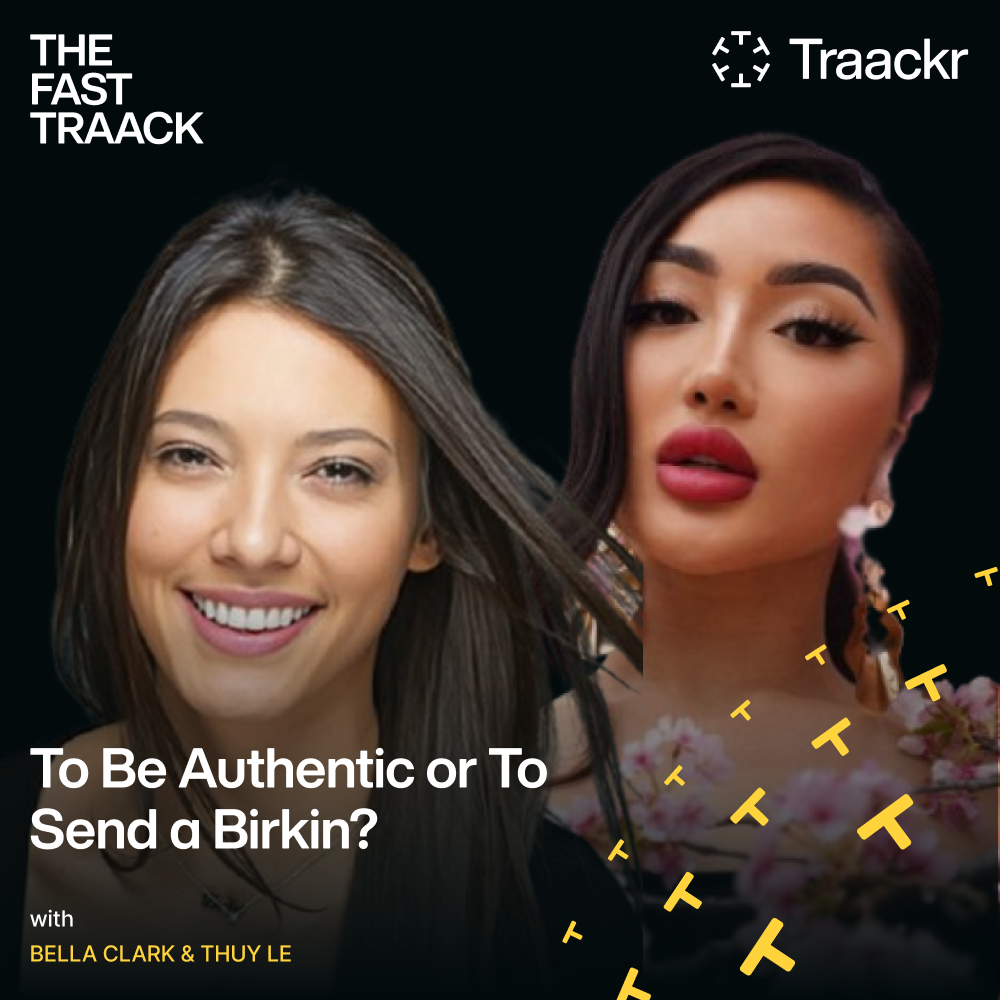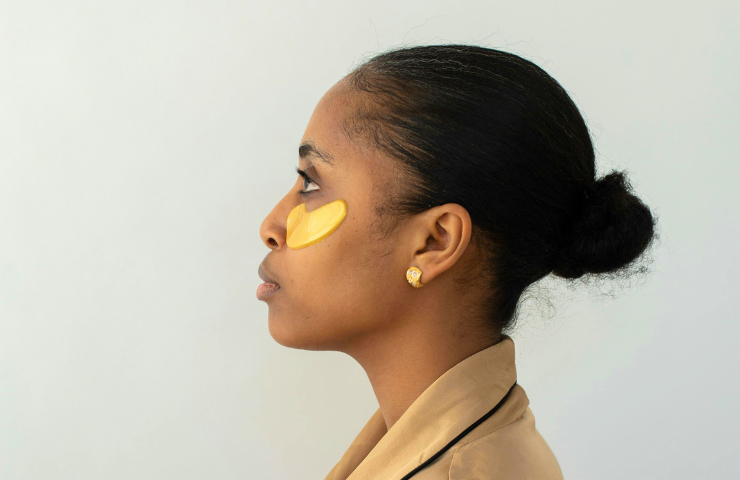How Pierre Fabre USA Built an Influencer Program from the Ground Up

Pierre Fabre is the 2nd largest dermo-cosmetic laboratory in the world and the 2nd largest private French pharmaceutical group. In the US, Pierre Fabre USA has an extensive portfolio of prestigious brands such as Eau Thermale Avène, Klorane, René Furterer, Glytone, and more.
In the article below, Elena Suarez, Associate Director of PR and Influencer Marketing at Pierre Fabre USA shares how she built its influencer program from scratch during a time of unprecedented uncertainty and change.
How Pierre Fabre USA Built a Successful Influencer Program
Crafted a tailored strategy with the ability to pivot
“When I joined Pierre Fabre in 2019 there was no internal PR department and no influencer program. The strategy felt very straight from the traditional ‘playbook’, including things like large gifting campaigns, minimal analytics, and no in-person influencer events. When the COVID pandemic hit and everything changed. The reason why we were able to quickly and successfully pivot was because we did the hard work of clearly defining our goals and key areas of differentiation, and didn’t allow ourselves to get distracted by competitor noise.” — Elena Suarez, Associate Director of PR and Influencer Marketing at Pierre Fabre USA
Building an influencer program for a large brand from scratch is no small feat. There are often a lot of considerations and moving parts, and it can be overwhelming to build a strategy that is measurable, predictable, and (if successful) repeatable. To tackle this challenge, Elena and her team:
Defined and prioritized key areas of differentiation. Each brand has a unique personality and differentiation point, and, according to Elena, understanding and clarifying those two things can provide a strong but flexible foundation for your influencer program. This can help you determine who you partner with, what content you put out into the world, and more. For example, Avène is a portfolio brand with a French pharmacy heritage, and is rooted in dermatology with products that are targeted towards sensitive skin. In order to craft Avène’s individualized influencer program, Elena first spent time researching who was educating and talking openly about sensitive skin issues on social media. This led her to find skincare and dermatologist influencers — most of which were willing to try Avène’s products because they were already closely aligned with their audience’s needs and interests. Elena’s advice to other marketers? Don’t waste your time trend chasing or copying competitor strategies. There isn’t one way to build a good influencer program, so it’s important to find your own path to success!
Set clear key performance indicators. When Elena kicked off Pierre Fabre USA’s influencer program, she knew it was important to set key performance indicators (KPIs) so they could easily measure success and identify areas of improvement. Since the original influencer program was meant to build brand awareness and affinity, her and her team set general KPIs like number of activated influencers, video views, average engagement rate, and unique hashtag uses. Then for more specific campaigns like influencer product seeding, Elena set relevant “volume” or activity goals. For example, she would track the number of new influencers connections or product sends. When she started Pierre Fabre USA’s influencer product seeding campaigns, there were only 15 influencers per week (roughly 60 a month), but since then it has rapidly expanded to a directory of over 1,000 influencers that continues to grow.
Tip: Learn more about how to set goals and KPIs for your influencer program.
Created room for adaptability. The original influencer program strategy that Elena set out for Pierre Fabre USA in 2019 included classic elements like organic influencer product seeding, sponsored content, and in-person events. However, a lot of this had to shift when the COVID-19 pandemic took hold in 2020. Luckily, many of the goals, objectives, and key messages that the team had defined for their influencer program could be translated into other initiatives. For example, in-person influencer events were no longer allowed due to shelter-in-place mandates, so the team morphed them into educational Instagram Lives. Similarly, influencer product seeding campaigns remained a staple, but became more complex. Elena and her team wanted to avoid waste and also weren’t sure how much space each influencer had to store products — this meant they avoided doing mass sends, and instead selected influencers carefully and asked each one to opt-in to receiving products. (More on this in the next section.)
Developed diverse and creative partnerships with top influencers
“I’m really passionate about the relationship component of influencer marketing! If you want to build up a strong network of partners for your influencer program you have to be scrappy, personable, and creative. This is especially true if you are trying to build long term brand advocates on a budget! I am always challenging myself and my team to continually invest in their influencer relationships, even if it may take some time to see the return.” — Elena Suarez, Associate Director of PR and Influencer Marketing at Pierre Fabre USA
Influencer marketing is, at its heart, all about building strong relationships. If you don’t have a strong network of partners, then your influencer program will fall short. Elena and her team did several smart things when building their network of partners for their influencer program:
Leveraged use cases to personalize influencer product seeding campaigns. To avoid waste and inefficiency, Elena and her team wanted to make sure that they were strategic about how they gifted products. The team did this by using product use cases to find top influencers. For example, they used Traackr to find influencers that had previously posted about challenges that their products help solve like thinning hair and eczema breakouts. The team also used Traackr to evaluate how influencers’ posts about gifted products performed — influencers that had high performance were then considered for paid partnerships.
Tip: Did you know that 61% of marketers report that less than half of influencers receiving gifted products actually post on social media? Check out our recent influencer product seeding report to uncover more data, tips, and strategies that might help your influencer program.
Prioritized a diverse set of influencer partners. The beauty industry is a highly saturated space, especially when it comes to influencer marketing. Elena and her team knew they needed to work with more than traditional beauty influencers, so they created influencer “subcategories”. Some of these include: skin experts (physicians, dermatologists, and other skin professionals), “skintellectuals” (regular consumers and influencers who are passionate about all things skincare), comedians, and moms. These influencer subcategories were activated according to each brand’s tone and needs. For example, portfolio brands Avène and Glytone are centered around education and science — so the team partnered with physicians.
Invested in relationship building and creative campaigns. To ensure alignment, earn brand love, and improve creator retention, Elena and her team focused on building strong relationships with each influencer. Part of this was achieved simply by spending time with every influencer, and part of it was achieved by finding unique ways to add value to their influencer partners. During the pandemic the team wasn’t able to invest in a lot of traditional sponsored partnerships due to low budget, so they found a way to support causes that their influencers cared about. For example, #AskAvene was an Instagram Live series that focused on the educational aspect of the brand. Dermatologist partners like Dr. Mona Gohara, Dr. Ted Lain. Dr. Adeline Kikam, Dr. Elyse Love, Dr. Onyeka Obioha, Dr. Latanya Benjamin, and Dr. Jenny Liu were asked to come on every week and speak about a topic and skin concern. In return for participating in this segment, the team sent Avène products to a charity or hospital of the physicians choice. By the end of the series, there were over 10K products donated to different charities while further developing a great relationship with key opinion leader (KOL) physicians.
Embraced a performance-driven influencer marketing mindset
“Data is the most powerful tool available for influencer marketing teams! This is why it's so beneficial to see that we are getting more platforms (like Traackr) to help us measure and analyze performance metrics, spend efficiency, and cost equivalency. At Pierre Fabre USA, we use data to understand what we’re doing well, set benchmarks for ourselves to work against, and to uncover where the “gray space” or opportunities for improvement lie.” — Elena Suarez, Associate Director of PR and Influencer Marketing at Pierre Fabre USA
One of the trickiest and scariest parts of starting a new influencer program is that you don’t have past data to base budget or projected performance on. Luckily, Elena was able to use her lengthy experience in influencer marketing to approximate what “good” performance looked like for the different campaigns that the brand was running.
Once the brand completed its first few campaigns, one of the first orders of business was to do a full performance audit. For example, with some of its early influencer product seeding campaigns, the team evaluated:
- Which influencers mentioned them the most?
- Which influencers performed best? (earned the most engagements, most video views, and highest engagement rate?)
- Which influencers incorporated the messaging and tone that fit the brand?
- Based on the above, which influencers would pass the “spend efficiency” test if they were to be brought on as sponsored partners?
Another example was the brand’s first TikTok campaign, which had over 25 influencers. In this case, the team evaluated:
- Number of mentions per influencer
- Performance metrics per influencer (total posts, engagement rate and views)
- Spend efficiency per influencer (cost per view, cost per engagement, etc)
- Cost equivalency per influencer using Traackr’s Brand Vitality Score (VIT)
Tip: If you’re just getting started and are unsure how to measure or report on success, we have a template for the ultimate influencer program report.
Pierre Fabre USA’s influencer program results so far
“Our major goal has always been to ensure that we are increasing brand awareness, whether it's through organic or sponsored campaigns. As we look to our future campaigns, we will continue utilizing a data-led strategy, while ensuring that we’re staying competitive with our KPI’s, and leveraging a healthy mix of platforms and trends.” — Elena Suarez, Associate Director of PR and Influencer Marketing at Pierre Fabre USA
Given that Pierre Fabre USA’s budget was small for its first campaign, the team initially set conservative KPIs. But due to the brand’s ability to pick the right partners, develop truly engaging content, and leverage multiple social platforms, their results far surpassed their goals:
- 15 active influencers and posts (67% over goal)
- 7,434,611 video views (1387% over goal)
- 9.6% engagement rate (380% over goal)
- The campaign also resulted in the creation of a new hashtag (#30secondstosoothe) which when first launched had 6.7M views on TikTok but now has 9.1M views
This was the beginning of Pierre Fabre USA’s paid influencer campaigns, and since then the organization has continued launching different ones across all of their brands, challenging themselves with competitive KPI’s each time. Two standout successes include:
- Avène’s Cicalfate+ Restorative Protective Cream campaign earned a 2.7M reach, 4.66% engagement rate, and a spike in sales that helped shift it to the current number one product within the Avène portfolio.
- Klorane’s National Dry Shampoo campaign highlighted the cult favorite Dry Shampoo with Oat Milk, activating 98 creators and resulting in 41M reach and a 7.3% engagement rate. This product is still a favorite and top performer within the brand portfolio.
Elena and her team also use Traackr’s Brand Vitality Score (VIT) metric to continually glean new insights and track the performance of their influencer program. For example, in 2022, despite having a lower number of activated influencers, the brand successfully increased their VIT due to strong content performance and influencer loyalty. This year, the team is looking to increase that VIT success even more by maintaining its strong brand advocates while also putting extra emphasis on activating more influencers.
If you want to stay up to date on the amazing work that Elena and her team are doing at Pierre Fabre USA, follow the brands on Instagram at @aveneusa @glytoneusa @renefurtererusa and @kloraneusa!

Listen to Bella Clark, Head of Influencer and Partnerships at Lipton, and content creator, Thuy Le, share why authenticity outshines extravagance when it comes to creator partnerships.
Listen nowSee which brands are leading the way in influencer marketing with our real-time performance leaderboard.
View brand leaderboard_Nick_Fancher_Photos_ID6169.jpg)
Unlocking Creator Value for Global Brands in the Age of AI

The UK’s New “Less Healthy” Food & Drink Ad Rules Just Changed Influencer Marketing

Rising and Top Influencers #Over40 in the Beauty Industry
Level up your creator marketing expertise
Get industry insights and updates straight to your inbox.
